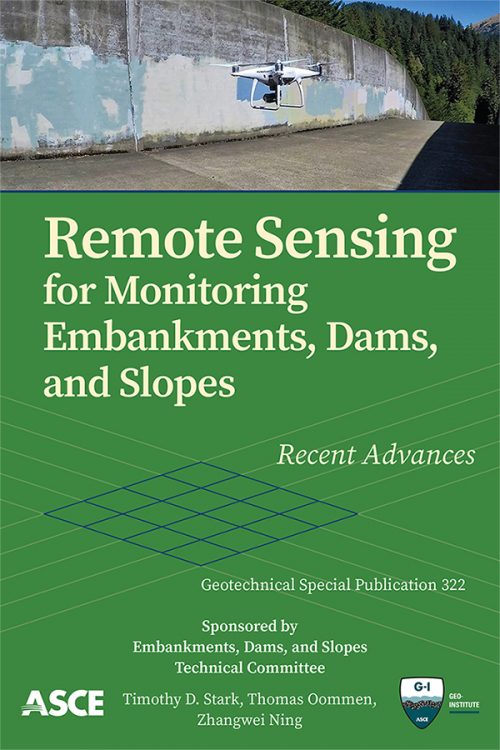New ASCE Publication Offers Guidance on Using Remote Sensing Monitoring

Reston, Va. – ASCE’s newest publication, Remote Sensing for Monitoring Embankments, Dams, and Slopes, GSP 322, provides information on selecting and deploying a monitoring network to assess the behavior, geometry, total and differential for embankments, dams, and slopes (EDS) movement, and potential risks of the EDS movement on people and infrastructure.
This Geotechnical Special Publication covers general technologies used for EDS monitoring, selection and installation of networked sensors for predictive analytics and image recognition, application of monitoring techniques in the design of early warning systems, case studies, and support for decision-makers in implementing early warning systems.
Also included is information on a broad range of technologies for deploying remote sensing:
- radio detection and ranging (radar),
- synthetic aperture radar (SAR),
- interferometric synthetic aperture radar (InSAR),
- light detection and ranging (LiDAR),
- digital photogrammetry and image processing,
- microelectromechanical systems (MEMS),
- automatic motorized total stations (AMTS), and
- unmanned aircraft systems (UAS).
Practitioners and researchers will find this publication useful in understanding and utilizing currently available remote sensing technology and to advance and refine the monitoring of embankments, dams, and slopes.
To purchase online visit the ASCE Bookstore
Limited review copies are available for book reviews. Please contact Kevin Higgins, [email protected]; phone 703-295-6266.
About ASCE
Founded in 1852, the American Society of Civil Engineers represents more than 150,000 civil engineers worldwide and is America’s oldest national engineering society. ASCE works to raise awareness of the need to maintain and modernize the nation’s infrastructure using sustainable and resilient practices, advocates for increasing and optimizing investment in infrastructure, and seeks to “Raise the Bar” on engineering knowledge and competency.


